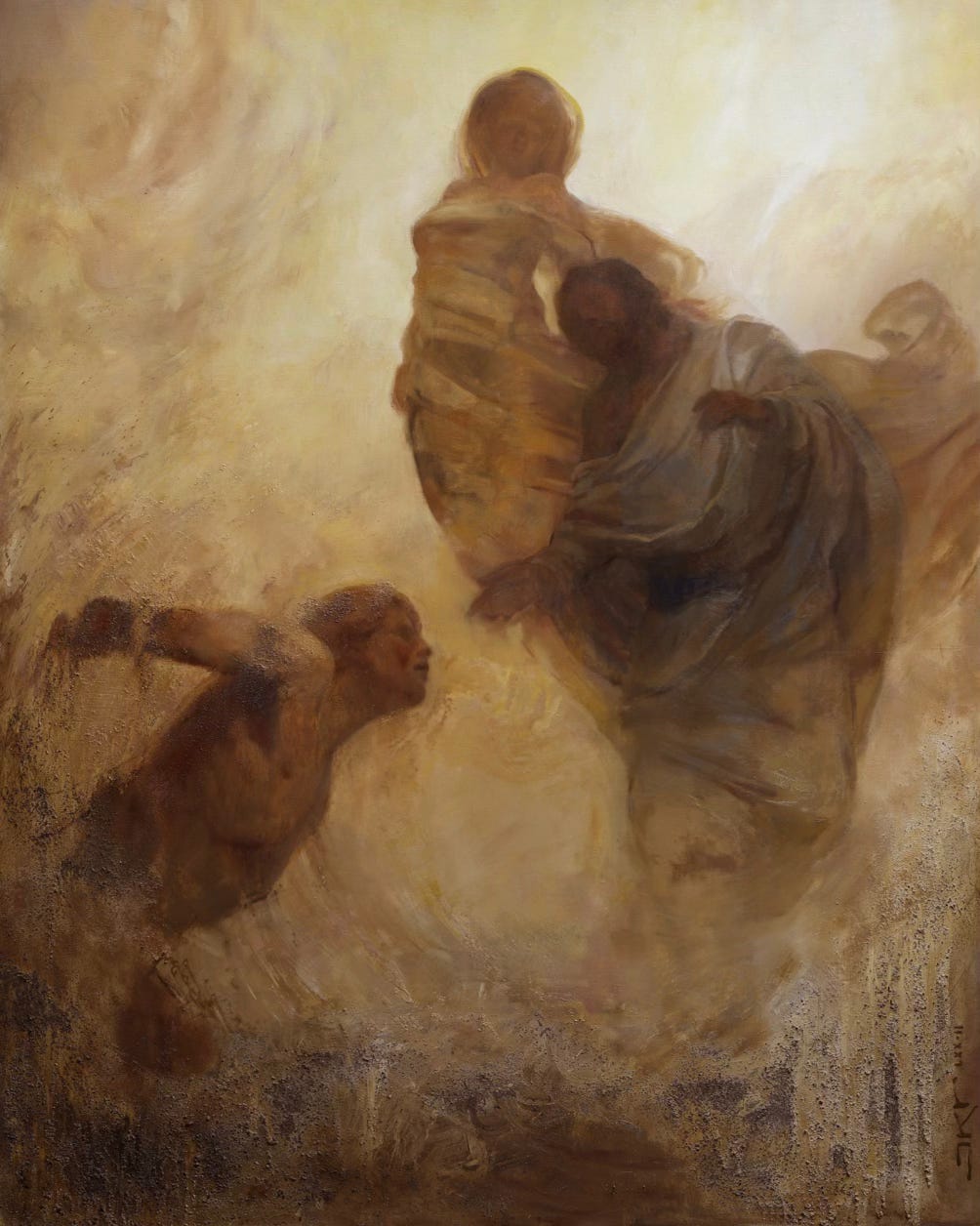Reflections on "Breath of Life" by J. Kirk Richards
Latter-day Saint Visual Theology Series
I’m not convinced that Latter-day Saints can ever have true and traditional theologians. We can theologize—and I do believe that is what we’re doing when we “seek learning, even by study and also by faith” (D&C 88:118). But members are a part of an institution, a church, the Church—one whose centralized structure and core tenets are maintained by prophetic authority. Any theology (or in our functional vernacular, “doctrine”) requires the blessing of “prophets, seers, and revelators” from the top down. Structurally, those that could call themselves theologians don’t.
As much as we might want a Latter-day Saint Thomas Aquinas or Martin Luther, I don’t think there can be a Latter-day Saint theologian.
But if anyone could ever come close, it would probably be an artist.
I remember the first time I saw J. Kirk Richards’s painting Breath of Life (From the Dust) (2011). I was 17 years old, a senior in high school, working as a volunteer at the Springville Museum of Art. In 2011, there was a particularly good batch of work entered into the museum’s annual Spiritual and Religious show, and I was delighted to see new works on the gallery walls during a casual walkabout. As I entered the step-down gallery, however, I abruptly stopped in front of an eight-foot-tall painting. Three figures—two male, one female—were engaged in a moment of divine creation. I glanced at the label for interpretive guidance: Breath of Life (From the Dust). The title comes from the creation story in the book of Genesis: “And the Lord God formed man of the dust of the ground, and breathed into his nostrils the breath of life; and man became a living soul” (Genesis 2:7). With this passage in mind, I made myself comfortable on the bench in front of the painting and went to work deciphering the image in front of me:
Who are the figures?
Adam (left), Heavenly Father (right), Eve (middle).
Jesus (left), Heavenly Father (right), Heavenly Mother (middle).
The artist himself (left), Heavenly Father (right), Heavenly Mother (middle).
An everyman figure (left), Heavenly Father (right), Heavenly Mother (middle).
I must have spent half an hour looking at the painting. The longer I looked, the more each of these possibilities truthfully coexisted. Although obscured by a cosmic swell—and literal dust applied to the canvas—Richards had done something ineffable, but nevertheless something true, something real. Richards was making theology visible.
This was the first time I had seen the divine feminine, which is just another way of saying it was the first time I saw myself.
Three years later, as a part of my preparation to serve in the New York New York South Mission, I received my endowment in the Draper temple. I have come to love and appreciate temples as spaces of worship, rest, and revelation, but my first visit (and many that followed) was not all that I had hoped. I was unsure of my place in the kingdom and did not find, as Eliza R. Snow had reasoned, “a Heavenly Mother there” (“O My Father,” Hymn 292).
It was the visual theologizing of paintings like Richards’s, rather than visual aids accompanying temple instruction, that filled in the gaps for me as I worked through these questions of the soul. Art was never a substitute but an integral supplement to my temple participation—one that assists me time and time again whenever I’m called to navigate the unknown.
In 2017, I encountered this painting a second time while working as a student intern for Ashlee Whitaker on The Interpretation Thereof: Contemporary LDS Art and Scripture. It was the centerpiece of the exhibition, and again I was moved—as were many other people who visited the museum. In her label, Whitaker boldly interpreted the female figure as Heavenly Mother. “This crowning capacity of godhood,” she wrote, “shared by both male and female, avows that ‘neither is the man without the woman, neither the woman without the man, in the Lord’ (1 Corinthians 11:11).”
To this day, Richards’s Breath of Life compels me. Unique and universal all at once, it gives form to both existing and unspoken truths. In my mind, it is the crowning example of Latter-day Saint visual theology—all that it already is and all that it can be.
Maddie Blonquist received her M.A.R. in Visual Arts and Material Culture from Yale Divinity School. She has worked at numerous art institutions, most recently the Yale University Art Gallery, Utah Museum of Contemporary Art, and the now at the Brigham Young University Museum of Art. She is passionate about collaboration, arts accessibility, and museum studies.
Art by J. Kirk Richards.





Lovely painting, lovely essay. 🙏🏻